Jameel Radcliffe was the kid who used to draw custom “Dragon Ball Z” characters and give them away. In his elementary school class, a well-done drawing was valuable currency. It made him proud. At a young age, he saw how art could move people.
“One kid came up and was like, ‘Oh, that’s so cool. Can I have one?” Radcliffe said. Soon, his classmates had lined up for drawings. “I ended up doing it for the whole class.”
From anime, Radcliffe found his way to abstract painting, and eventually to figurative oil paintings. His work blends the natural world with the urban world he grew up in.
For Radcliffe, Mother Nature and a sleek pair of Jordans aren’t opposing concepts. The animals in his paintings offer a metaphysical touch, like a totem of protection. Ravens in flight or owls perched on shoulders add a mythical quality to Radcliffe’s portrayal of young people.
“My original goal was to celebrate people’s fashion and their individual styles, but then I thought adding the birds with them would show a bit more of their soul,” he said. “Like their beauty that they don’t have to put on. It’s like this natural, beautiful thing.”
The 30-year-old grew up in Boston watching animal documentaries on tape with his dad, but always viewed the natural world as far away from his own. His family is a blend of cultures and traditions. His mother, a Puerto Rican woman and devout Christian married his father, a Muslim and African-American man. Together, they created a family that spent summers on Martha’s Vineyard with occasional visits to Puerto Rico. Radcliffe said growing up around those faiths influenced his perspective on spirituality.
He remembers his parents worrying about what he would do with his life. Artists For Humanity gave him direction. It’s where he learned his craft and began painting for the first time, as a high school student.
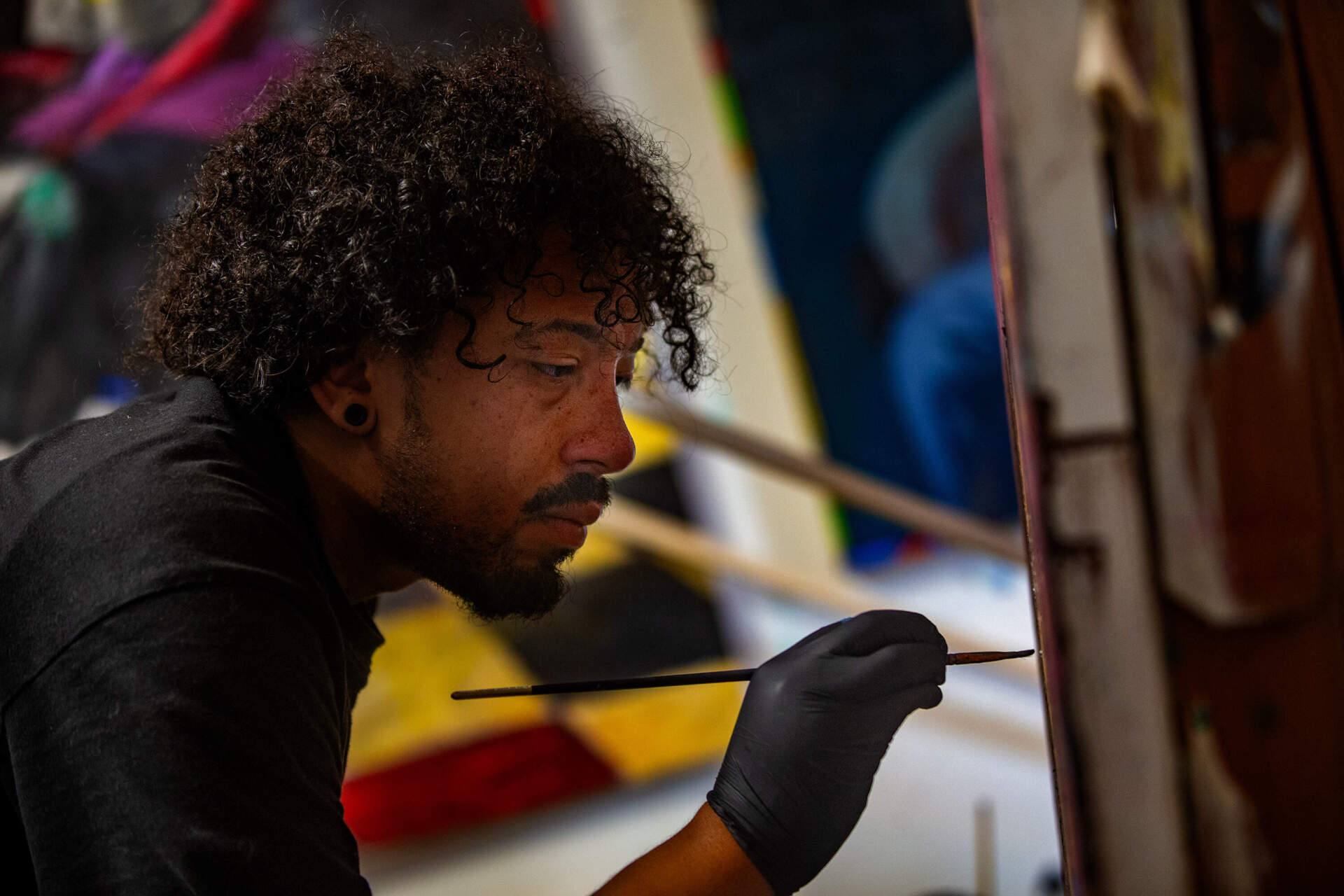
“In Artists For Humanity, you always start with a self-portrait,” he said. “So, it was terrible. It was really bad. But as time went on I learned to work at it and get better. And I started really appreciating and having fun painting, even though throughout my whole time in high school, I was still skipping school, getting terrible grades, like, barely passing. Painting was always something that I took seriously. I was there every day.”
With this collection of work, he eventually got a full ride to Montserrat College of Art in Beverly. There, the emphasis was on technique, and he met other artists whose work he really admired. Artists who know Radcliffe say what stands out about him is his discipline. He spends hours honing, experimenting and evolving his style.
For his portraits, Radcliffe asks his subjects to pick the animal they most identify with, a lion or a colony of blue rabbits. The theme of pairing people with animals came to him in a dream. He dreamed he was someone who could turn into a white deer, with friends who had the same ability. They would run through the forest, free, fleeing hunters.
Sometimes he includes colorful masks that look ancient and futuristic at once, many made by his studio mate Rebecca Greene. Dragons, birds and other fantastical animals made of recycled cardboard surround them in the space they share.
“It’s exciting to see pieces that I made probably like 15, 16, 17 years ago getting this new life in Jameel’s works,” Green said. “He turns them into something else. It’s just, like, the next evolution.”

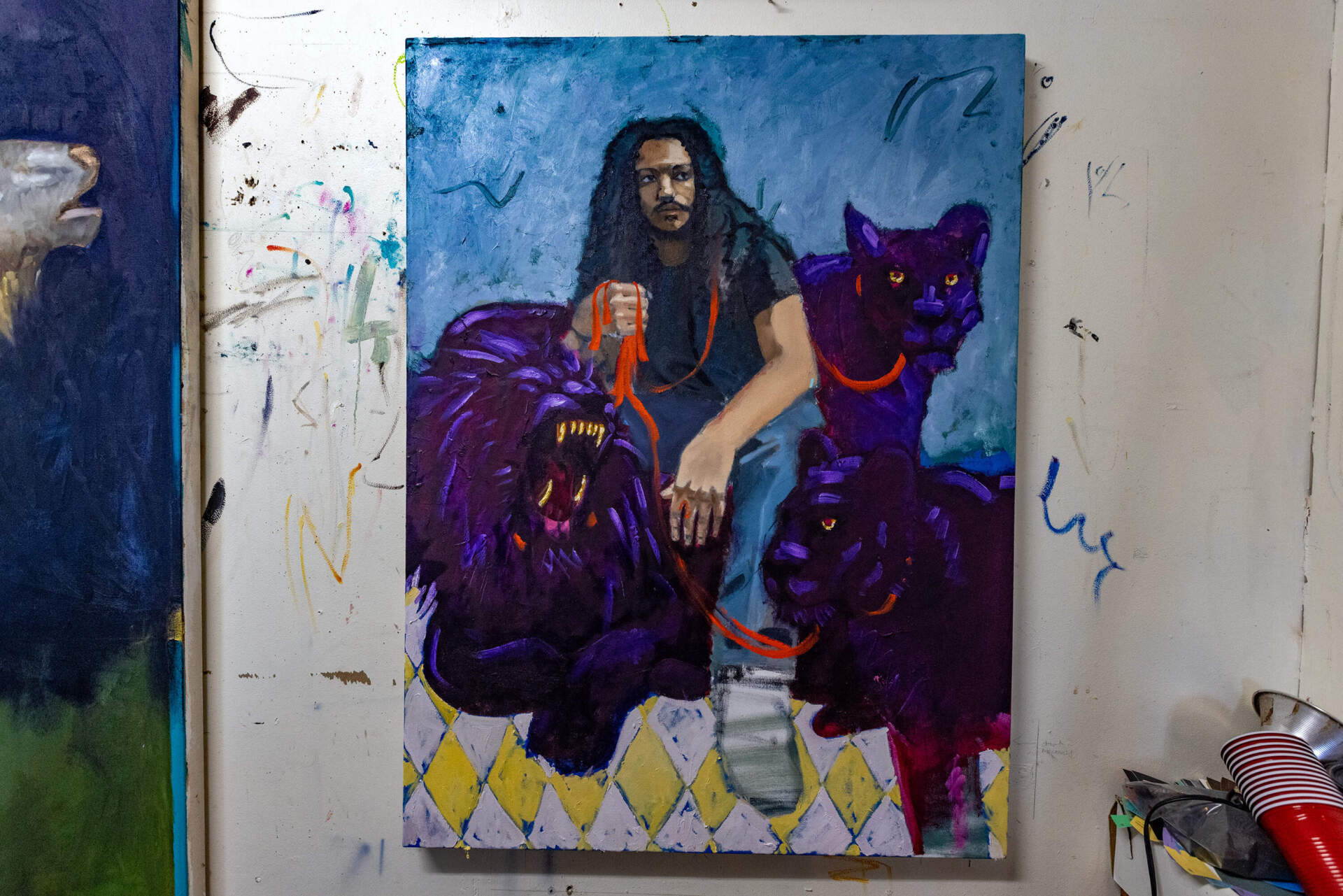
These are the unmistakable elements in Jameel Radcliffe’s oil paintings. But what makes the work stand out is who he paints: the teens he mentors. While he loves to paint, he said he doesn’t do it solely for himself.
“I really want the people that I’m painting to be excited about it and to have things that they recognize and love,” he said. “As much as it is something I enjoy doing, it’s something that I hope that they can be proud of as well.”
Radcliffe’s work expands the canon of who gets to be a subject of fine art. He takes inspiration from masters of the form, like John Singer Sargent and Diego Velázquez. Except they were known to paint power, royalty. Radcliffe paints what he knows best, according to Jason Talbot, co-founder of Artists For Humanity and its managing director of programs.
“When you’re just a kid from a hood and you see yourself on the walls of a gallery, it’s pretty special,” Talbot said. “It means somebody really cares for you.”
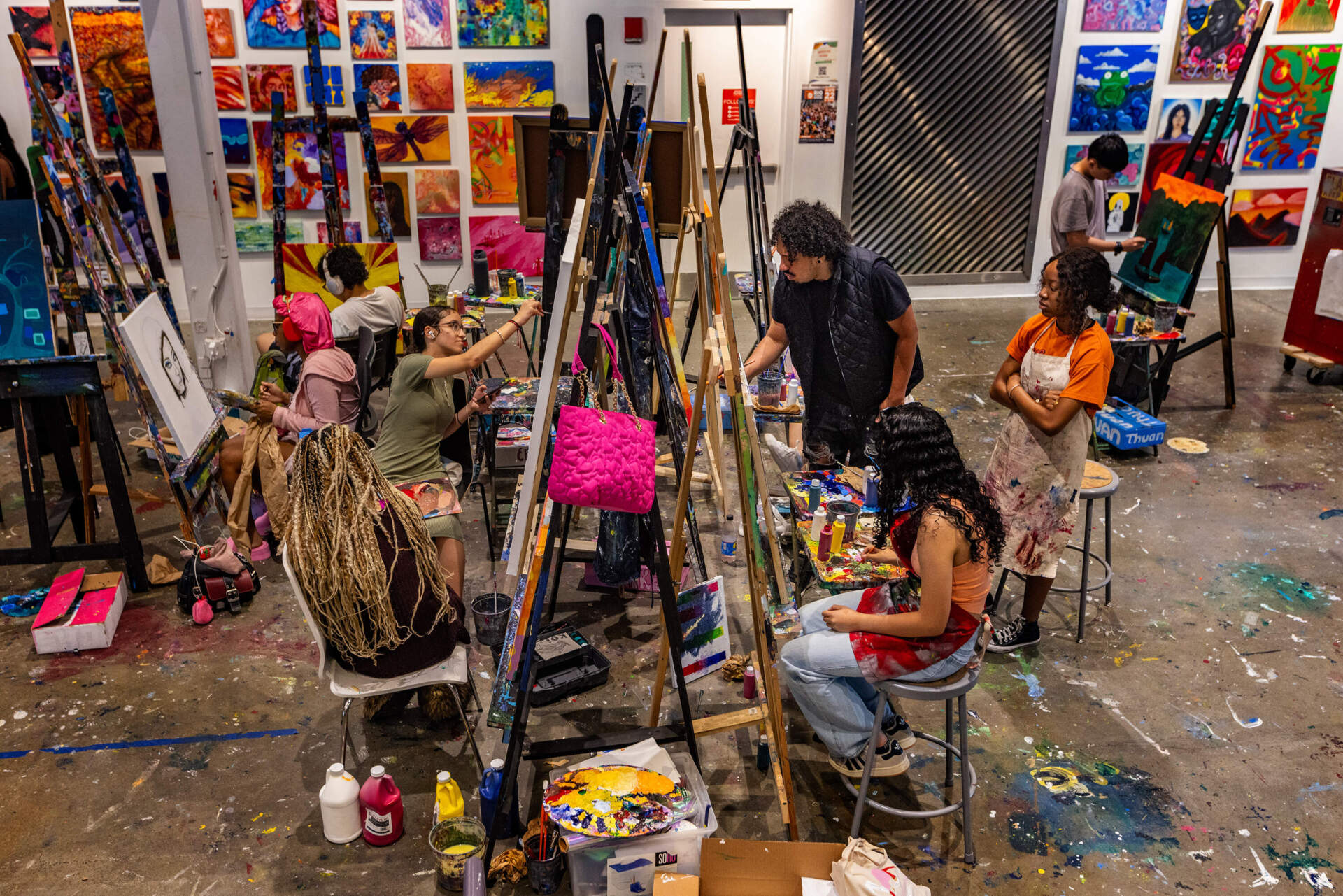
Radcliffe teaches at Artists For Humanity every summer. One Friday, in a room full of paint-splattered easels, brushes dabbed color onto a herd of elephants or flowers in bloom. Radcliffe walked around quietly offering advice, not interrupting if a student seemed in the zone.
“Something I want them to get in their heads is that there is no reason to waste time trying to reach perfection right now,” Radcliffe said. “Just paint and get as many paintings out as you can, make as many mistakes as you can.”
Many of the students, like 18-year-old Sirius Coley, have learned from him since early high school. Coley is among the teens included in Jameel’s latest series. He depicts her with yellow braids, holding a neon green water gun and wearing headphones. Through shadow and experimentation with colors, the image moves between pure abstraction and figurative drawing. Behind Coley is a deep dark gray cloud. She looks ethereal.
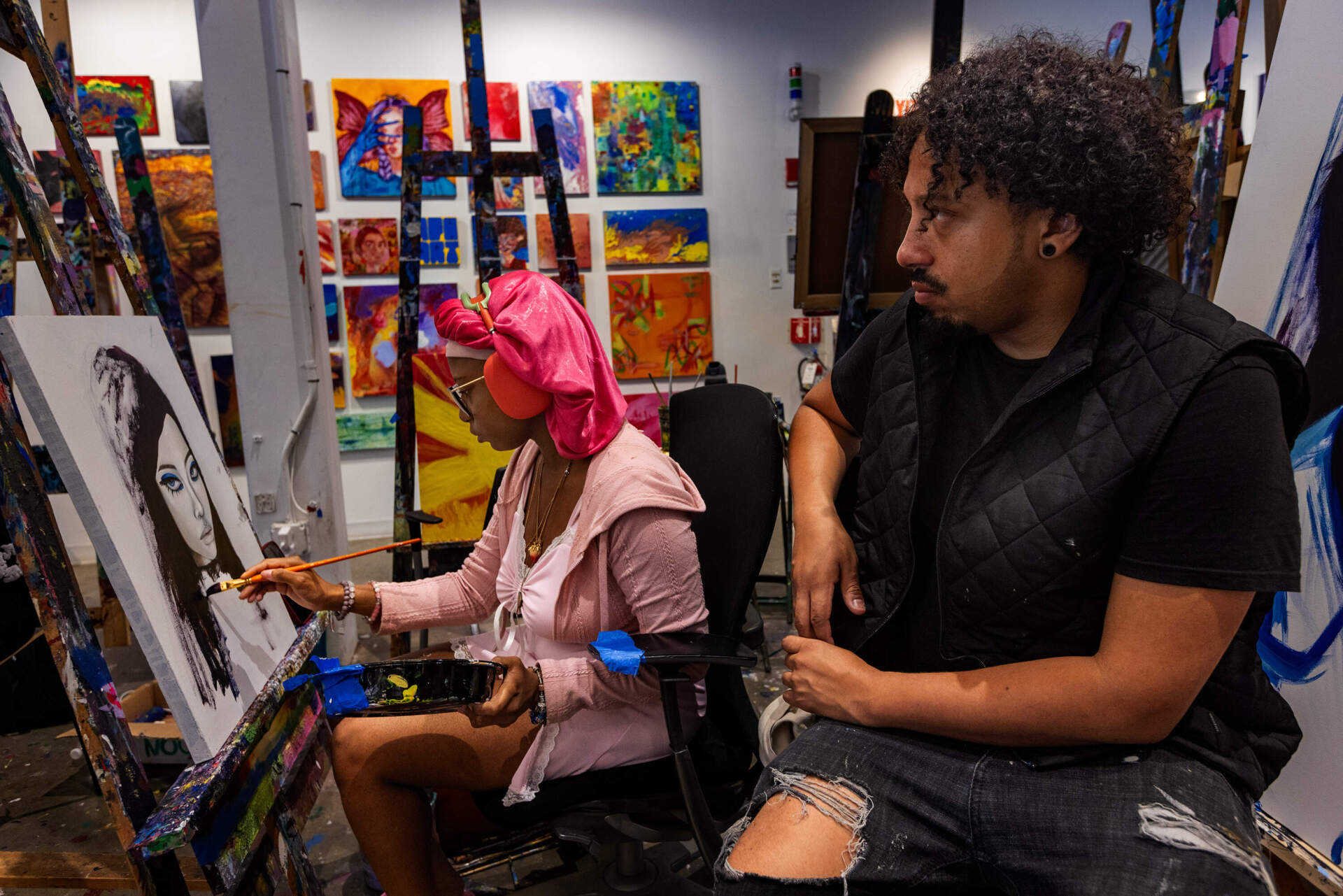
“I feel like he’s telling my story through his painting,” Coley said. “At the time that he asked me to pose for him, it was near the end of my senior year, so it was like he was capturing a chapter ending and then a new chapter almost beginning.”
This summer, Talbot, along with some of Radcliffe’s students, saw the painter’s art on display at the ShowUp Gallery in the South End. Talbot got emotional, watching the teen’s faces — which are featured in the portraits — as they saw themselves on the walls of the gallery.
“His nurturing relationship with the people in those paintings comes through,” he said. “There’s a certain care given to the way that he paints, but also it’s a story. It’s a story of discovery. It’s a story of exploration. It really makes people bond with his work.”
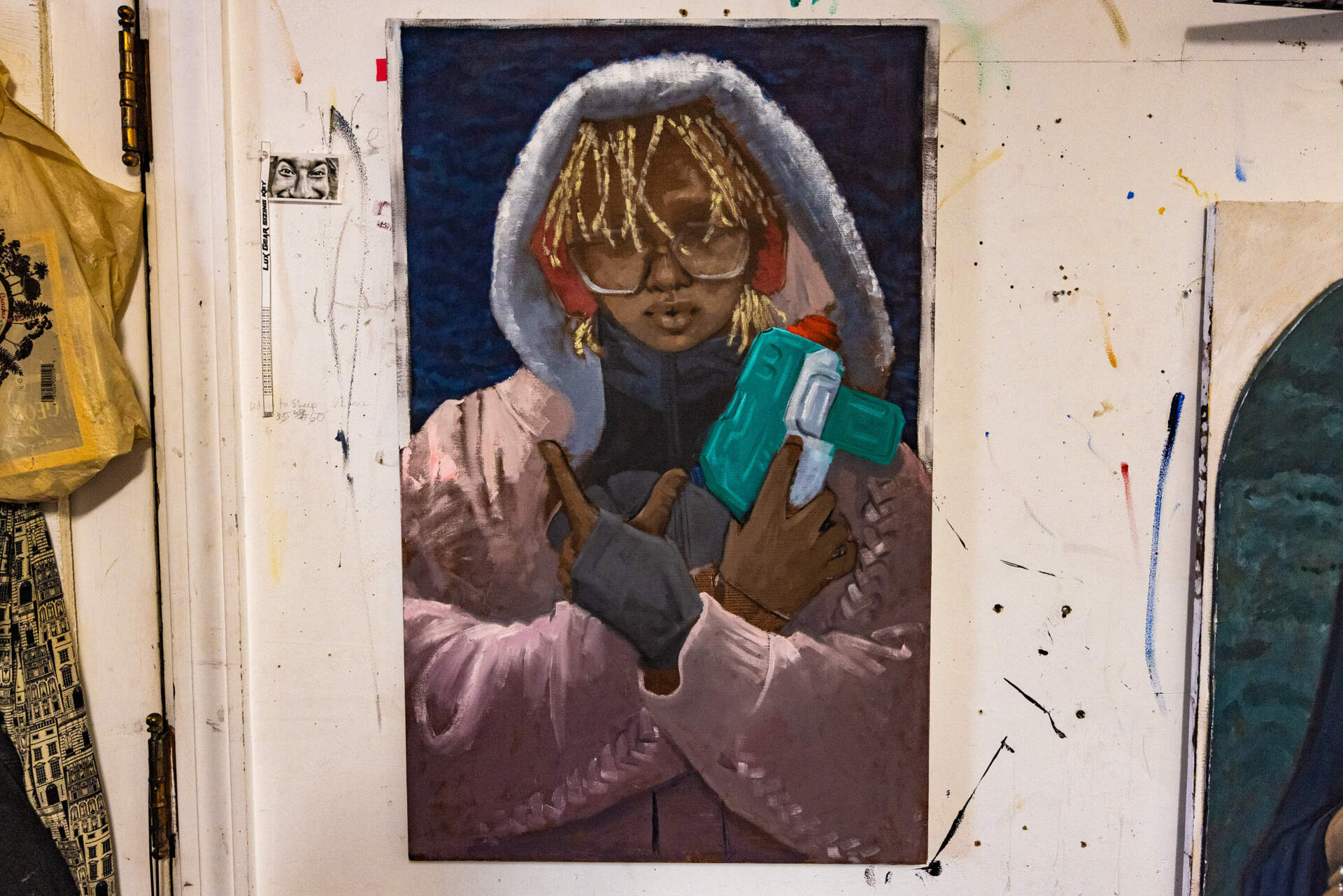
One of Radcliffe’s favorite paintings is a self-portrait, an ode to his childhood. In it, he’s wearing a crown in a field of flowers. The house in the background looks like a kid drew it. He holds a green lightsaber with a blanket, looking a bit like Max from Maurice Sendak’s “Where the Wild Things Are.”
“That was a painting where I kind of had to confront some things. … The painting was meant to be a celebration of the kid that I was,” Radcliffe said. “I don’t have the same excitement for some things or the same imagination. So I wanted to celebrate it, but also mourn because that kid isn’t here anymore.”
In the quiet of his studio, Radcliffe tells the story of a generation. Of students and friends from his neighborhood. He asks them the question: “How do you want to be immortalized?” His portraits show them that they, too, are worthy, just as they are. That they, too, should be remembered on canvas — regal, shining, full of possibilities.
